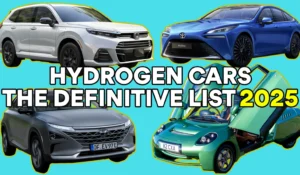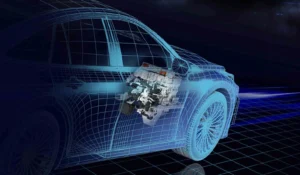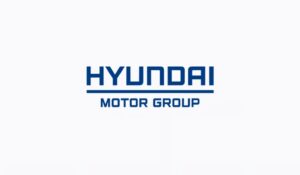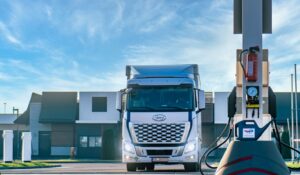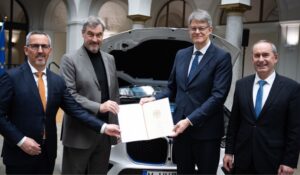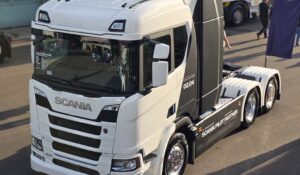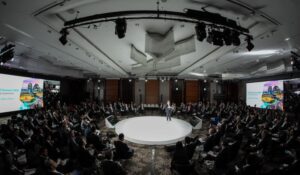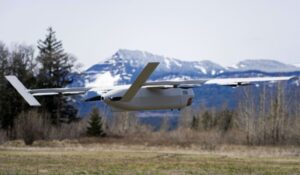New for 2025: Toyota Mirai goes single-spec, keeps 402-mile range and adds more kit
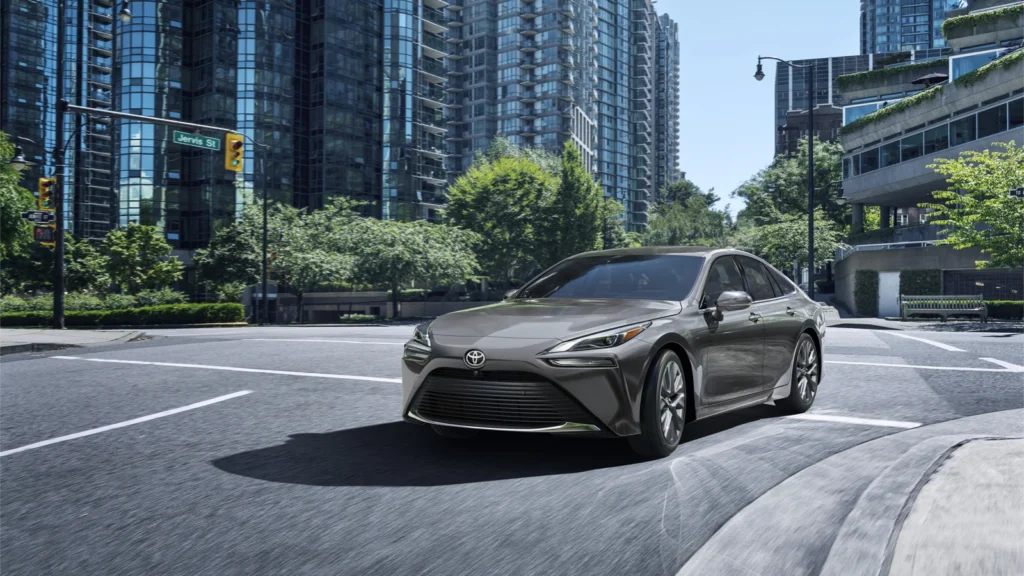
Toyota’s hydrogen-powered Mirai saloon returns for the 2025 model year with a simplified lineup, some newly standard features, and the same quiet commitment to showing how a fuel cell car should be done.
Gone is the two-trim approach – for 2025, Mirai buyers get a single XLE spec, now fitted with more as standard.
The Japanese firm said this “mono-grade strategy” streamlines the offering, though it likely also reflects the realities of selling a niche FCEV in limited markets.
Still, there’s nothing half-baked about the car itself. The Mirai remains the most refined hydrogen saloon on sale, capable of 402 miles of “EPA-estimated range” between refuels and delivering an experience that’s quietly competent – both literally and figuratively.
Streamlined trim, fuller spec
Toyota has added a few previously optional items into the standard mix for the MY25 XLE. New standard kit includes a Panoramic View Monitor (with overhead 360-degree imagery), front and rear parking assist with automatic braking, dual-tone heated mirrors, front footwell illumination, and Digital Key smartphone access – although the latter requires an active Remote Connect subscription (obviously, this is 2025) and, naturally, a functioning 4G signal.
Inside, you’ll find an expansive 12.3-inch touchscreen front and centre, backed up by a matching 12.3-inch digital driver display.
The system supports wireless Apple CarPlay and Android Auto, and there’s onboard cloud navigation, voice recognition (the “Hey Toyota” sort), and Qi wireless phone charging.
Three USB-C ports, a USB-A media slot, and a 12V socket to round out the connectivity offering.
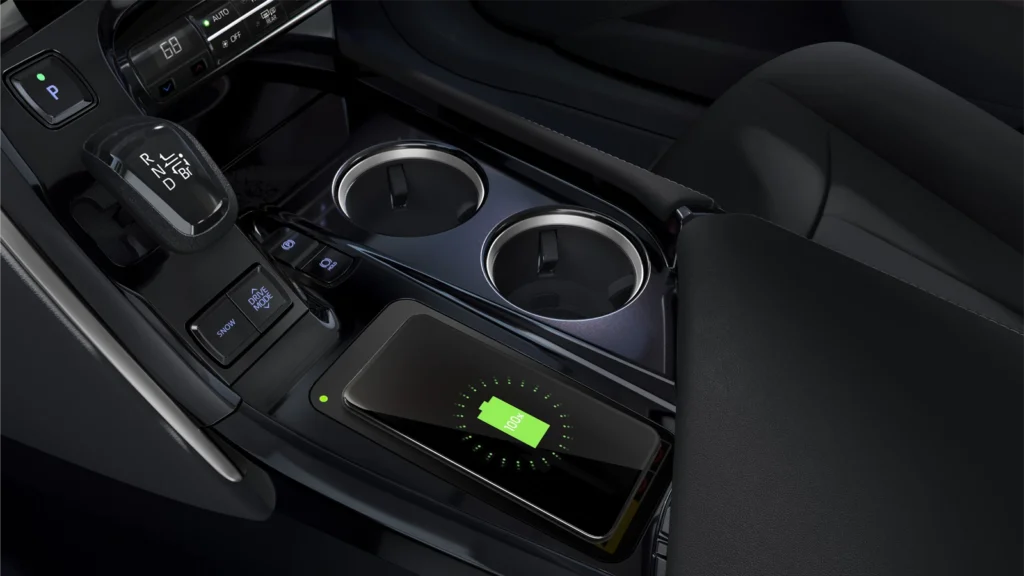
You also get Toyota’s full suite of Safety Sense 3.0 features, including radar cruise control, lane-keeping, road sign assist, automatic high beams, and a feature Toyota calls Proactive Driving Assist – a sort of digital chaperone that applies light braking and steering support in curves or urban traffic.
The updated Mirai starts at $51,795 MSRP in the US, before delivery fees.
The tech remains unchanged – and that’s no bad thing
Mechanically, the 2025 Mirai carries over unchanged. It’s still built on Toyota’s GA-L platform – the same one used under the Lexus LS – and retains a rear-wheel-drive layout, with an electric motor mounted at the back delivering smooth, unflustered acceleration.
Hydrogen is stored in two high-pressure tanks tucked beneath the rear seats and boot floor, and combined with outside air in a fuel cell stack under the bonnet.
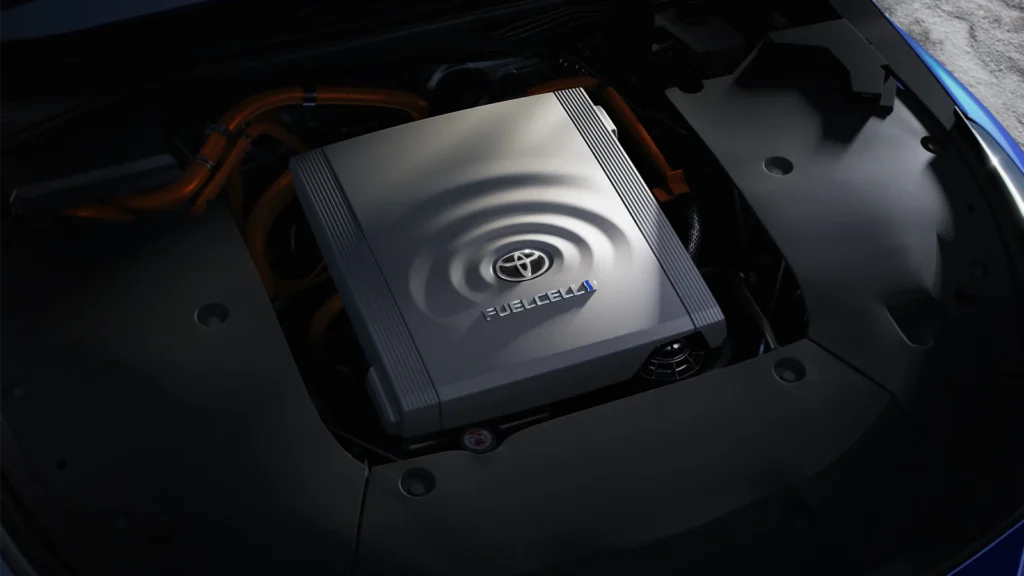
The resulting chemical reaction produces electricity to drive the motor and charges a small lithium-ion buffer battery – the only by-product being water vapour, which politely exits via a pipe beneath the car.
An electric air compressor feeds the fuel cell, with a water-cooled intercooler and oil cooler to manage intake temperature.
The system also filters out particulates and chemical nasties from incoming air, using an electrostatic filter and charcoal element.
It’s all pleasantly overengineered, and reassuringly Toyota.
No official figures have been given for 0-60mph or power output – and to be fair, few Mirai buyers will care – but previous figures put it at around 182bhp, which feels about right from behind the wheel.
What matters more is the smoothness, the silence, and the instant torque delivery that makes low-speed driving easy and motorway cruising almost eerie in its refinement.
Chassis and ride: all calm, no chaos
The GA-L platform is stiff, with “laser screw welding” and structural adhesives borrowed from Lexus. Suspension is multilink all round, and Active Cornering Assist gently applies brake pressure to keep the front end tidy in corners – not something many FCEV drivers will likely push hard enough to notice, but nice to know it’s there.
The Mirai wafts along – not quite in the Rolls-Royce sense, but in a similarly quiet, contented, sensible-shoes kind of way.
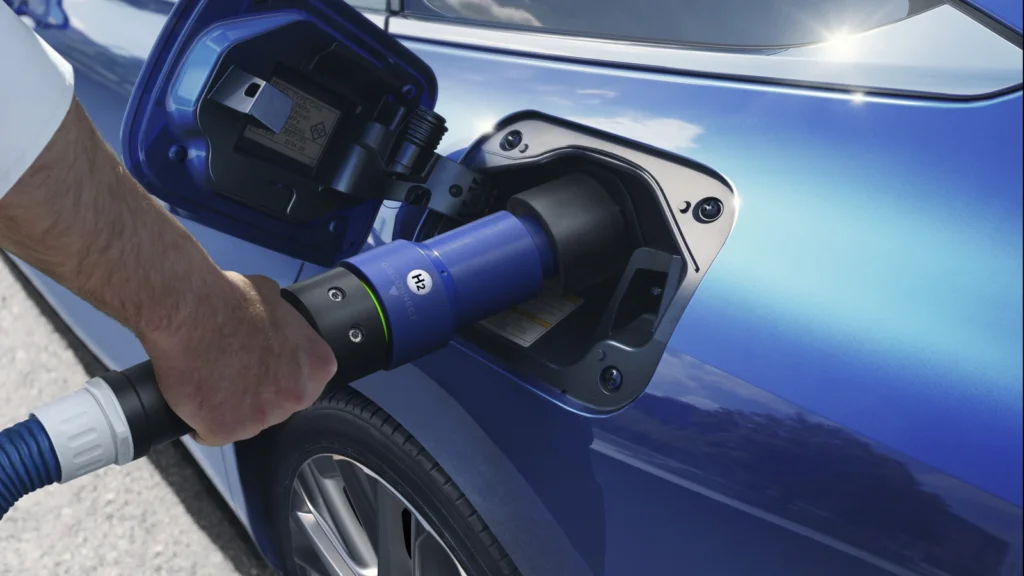
With no engine noise, the Mirai’s intake and cooling systems have been carefully tuned to keep cabin acoustics near-silent – helped by the fact the fuel cell’s main operation is largely a low-hiss whisper.
The result is a saloon car that rides like a Lexus, steers like a sensible Toyota, and emits nothing more than water vapour and the occasional light whoosh.
Exterior and interior
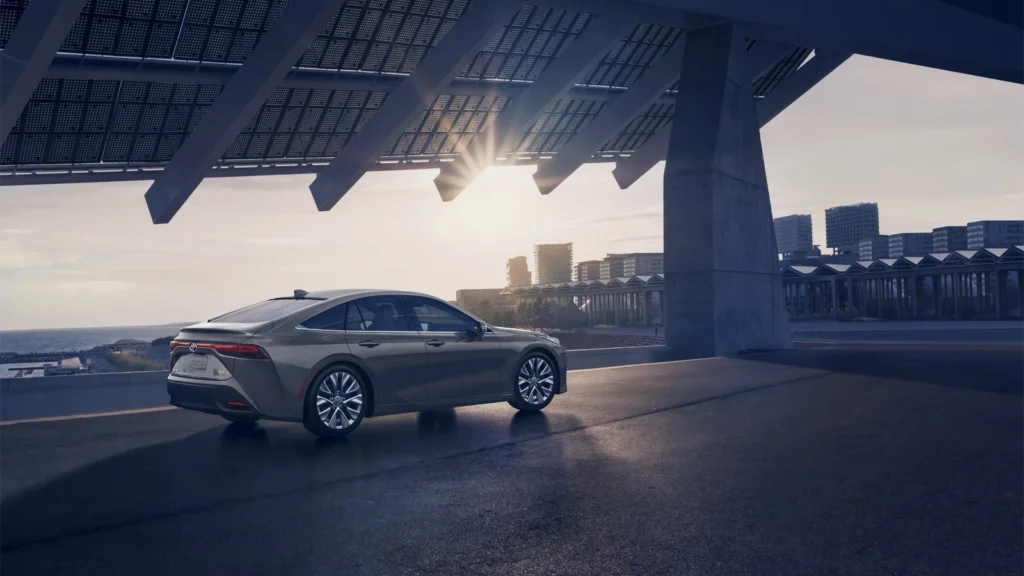
Styling is unchanged from the outgoing car. And that’s fine – it’s low, long and handsome in an understated sort of way, with slim headlights, a swooping roofline, and a full-width taillight bar that adds a hint of flair.
It rolls on 19-inch alloys and comes in six colours, including Supersonic Red, Hydro Blue, and something called Elemental Silver Metallic, which sounds like it was mixed in a cauldron
The cabin is trimmed in Toyota’s leather-alternative SofTex material, with heated front seats, dual-zone climate control, and power adjustment (eight-way for the driver, four-way for the passenger).
There’s no sunroof, and boot space is somewhat modest due to the hydrogen tanks – a slight compromise familiar to Mirai owners since the second-generation model launched in 2021.
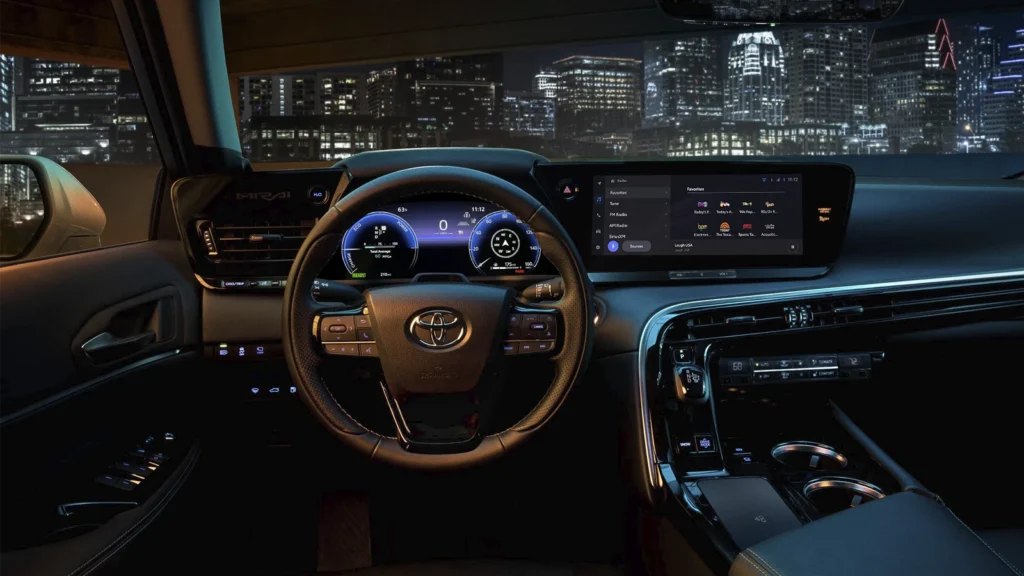
Incentives and ownership
Toyota is offering a reasonably generous ownership package:
- $15,000 of complimentary hydrogen fuel (or six years, whichever comes first)
- Three years of extended ToyotaCare servicing
- Ten years of Safety Connect roadside assistance
- Eight-year/100,000-mile warranty on fuel cell components
- Ten-year/150,000-mile hybrid battery warranty
- 21-day rental car benefit during the first three years of ownership
It also qualifies for California’s HOV lane stickers. A small mercy in LA traffic.
If there was a nationwide refuelling network, would you buy a hydrogen car?
A hydrogen car that works. Still.
The Mirai remains what it always was: a polished, refined, well-executed hydrogen saloon that works exactly as it’s supposed to.
Not much fuss, not much drama, no tailpipe emissions. Just the occasional pause at a hydrogen station that may or may not be online that day.
The 2025 updates don’t change the fundamentals – and Toyota hasn’t tried to. What they have done is simplify the offering, bolster the spec, and quietly remind the world that hydrogen cars already exist. And they work.
Now all we need is the infrastructure to match. No pressure, then.

